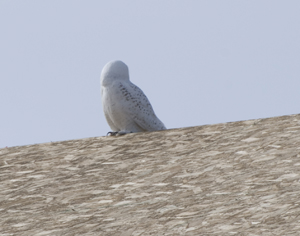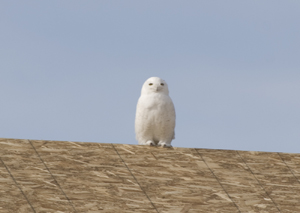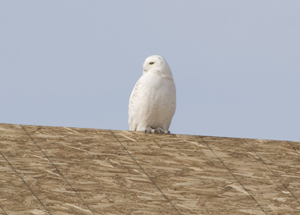Snowy Owl
Order: Strigiformes
Family: Strigidae
Genus: Nyctea
Species: scandiaca
About the Photos: (click on link to see this information)
Description
-
Length: 23.0"
-
Wing span: 52.0"
-
Weight: 4.0lbs (1,830 grams)
-
Large white owl
-
Some dark barring on back and wings
-
Very little differences in plumage between the males and females although the female is larger. Males get white as they age
Factoids:
- At the extreme northern margins of the arctic tundra lives the Snowy Owl, the northernmost, heaviest, and most distinctively marked owl of North America. Largely diurnal, it spends much of its time perched still and silent on prominent lookouts, waiting to make forays for prey
- Snowy Owl pairs fiercely defend their nests against predators, even wolves
- An individual adult Snowy Owl may eat three to five lemmings per day, or up to 1,600 per year
- The Snowy Owl can be found represented in cave paintings in Europe
- In some years, some North American Snowy Owls remain on their breeding grounds year-round, while others migrate in winter to southern Canada and the northern half of the contiguous United States. In the northern plains, New York, and New England, Snowy Owls occur regularly in winter. Elsewhere, such as in the Pacific Northwest, the Midwest, and eastern Canada, Snowy Owls are irruptive, appearing only in some winters but not in others
- Young male Snowy Owls are barred with dark brown and get whiter as they get older. Females keep some dark markings throughout their lives. Young males tend to have a white bib, a white back of the head, and fewer rows of bars on the tail than females. Although the darkest males and the palest females are nearly alike in color, the whitest birds are always males and the most heavily barred ones are always females. Some old males can be nearly pure white.
All photographs and audio clips are ©Jamie Mullin 2006
Sources: Cornell Lab of Ornithology & The Sibley Guide to Birds.
 |
|---|
 |
 |
 |
 |